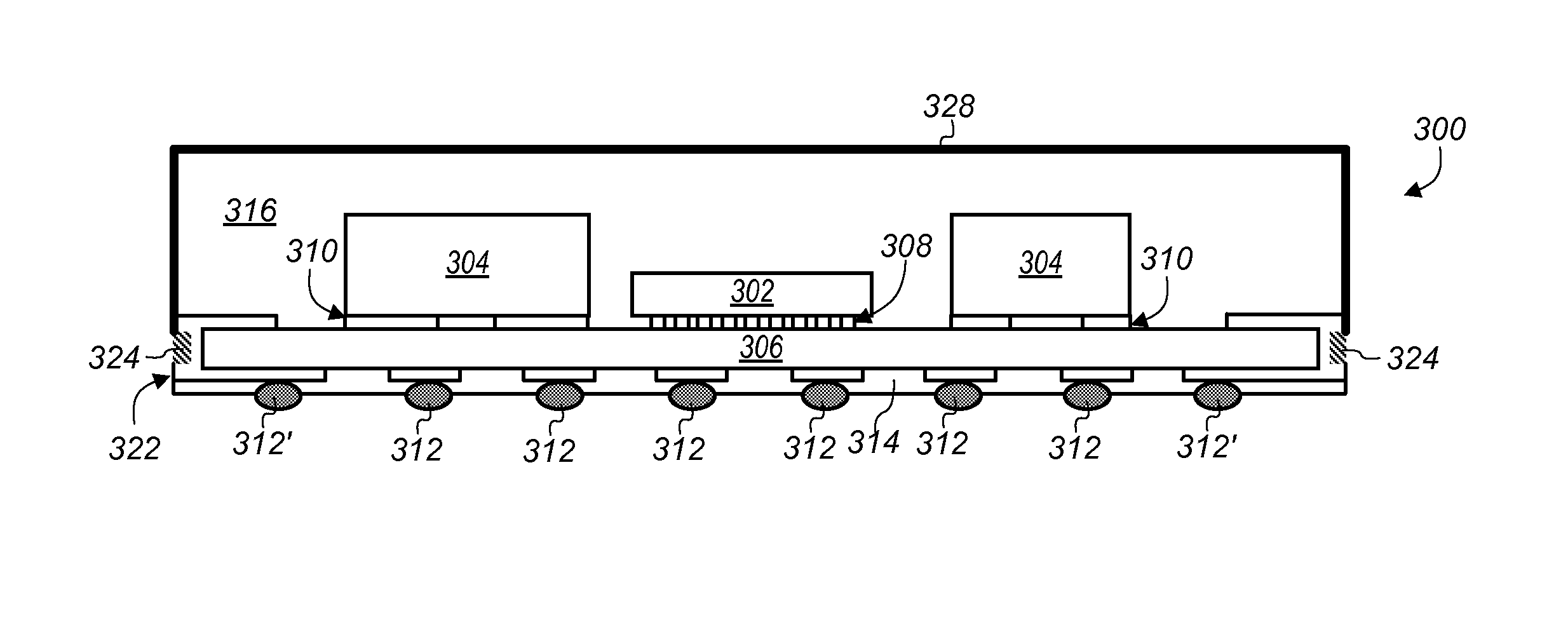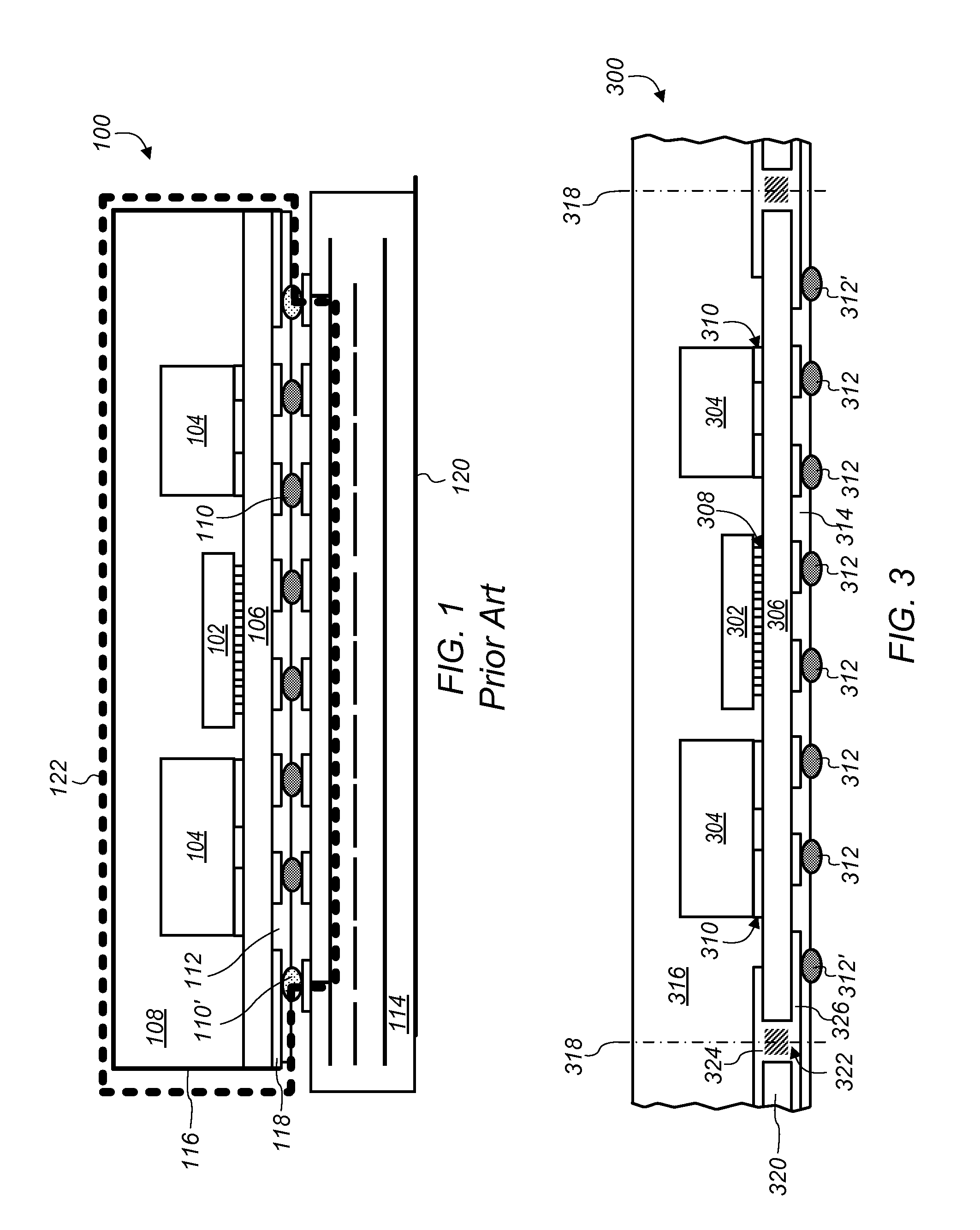SELF SHIELDED SYSTEM IN PACKAGE (SiP) MODULES
- Summary
- Abstract
- Description
- Claims
- Application Information
AI Technical Summary
Benefits of technology
Problems solved by technology
Method used
Image
Examples
Embodiment Construction
[0036]This specification includes references to “one embodiment” or “an embodiment.” The appearances of the phrases “in one embodiment” or “in an embodiment” do not necessarily refer to the same embodiment, although embodiments that include any combination of the features are generally contemplated, unless expressly disclaimed herein. Particular features, structures, or characteristics may be combined in any suitable manner consistent with this disclosure.
[0037]FIG. 3 depicts a side-view cross-sectional representation of an embodiment of a system in package (SiP). In certain embodiments, SiP 300 includes die 302 and passive devices 304 coupled to an upper surface of substrate 306. In some embodiments, SiP 300 includes only passive devices 304 (e.g., the SiP is a passive SiP). In some embodiments, SiP 300 includes more than one die 302. Die 302 may include, for example, silicon die or integrated circuit die such as processor die or logic die. In some embodiments, die 302 include DRAM...
PUM
 Login to View More
Login to View More Abstract
Description
Claims
Application Information
 Login to View More
Login to View More - R&D
- Intellectual Property
- Life Sciences
- Materials
- Tech Scout
- Unparalleled Data Quality
- Higher Quality Content
- 60% Fewer Hallucinations
Browse by: Latest US Patents, China's latest patents, Technical Efficacy Thesaurus, Application Domain, Technology Topic, Popular Technical Reports.
© 2025 PatSnap. All rights reserved.Legal|Privacy policy|Modern Slavery Act Transparency Statement|Sitemap|About US| Contact US: help@patsnap.com



